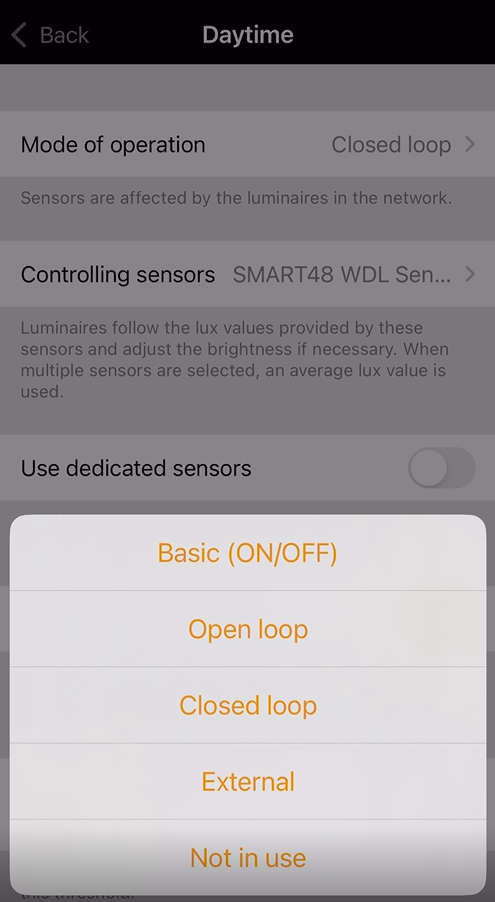Mode of operation
- Daylight scenes utilise information provided by lux sensors to automatically adjust the scene lighting level based on the amount of light available. Daylight control can be configured when editing a basic scene by selecting Daylight control from the scene Settings. Available settings are described below:
Basic (ON/OFF) Luminaires in an active scene will switch ON or OFF based on two configurable Lux threshold levels. Sensors may or may not be affected by light from nearby luminaires. The scene’s output is always defined by the dimming level(s) of the luminaires selected within the scene.Open loop Luminaires in an active scene will have their output level (0-100%) adjusted by comparing the sensor’s lux reading against a response graph. Sensors should not be affected by any light from the luminaires in the network. Examples: Luminaires controlled by a sensor installed in a separate location to the luminaires (e.g. outdoors) or controlled by a sensor that is facing towards a window away from the luminaires.
Closed loop A target lux level is specified. The sensor actively adjusts the luminaires in the active scene to try to reach and maintain that lux level via a feedback loop (by observing the results of its own changes). Sensors are affected by light from the luminaires in the scene. Example: Luminaires controlled by a daylight sensor that is in the same area as the luminaires.
External This is similar to the open loop option but is based on a 0-100% dimming signal being sent from the sensor rather than a Lux level. This option is designed to be used to combine a Casambi unit with a sensor which is not Casambi-activated. Examples include a CBU-ASD connected to a non-Casambi sensor, or when dimming is performed by an external DALI controller or DALI 2 sensor. Casambi-ready sensors created by our partners already contain the Casambi firmware so do not need to use the External option.

Daylight settings